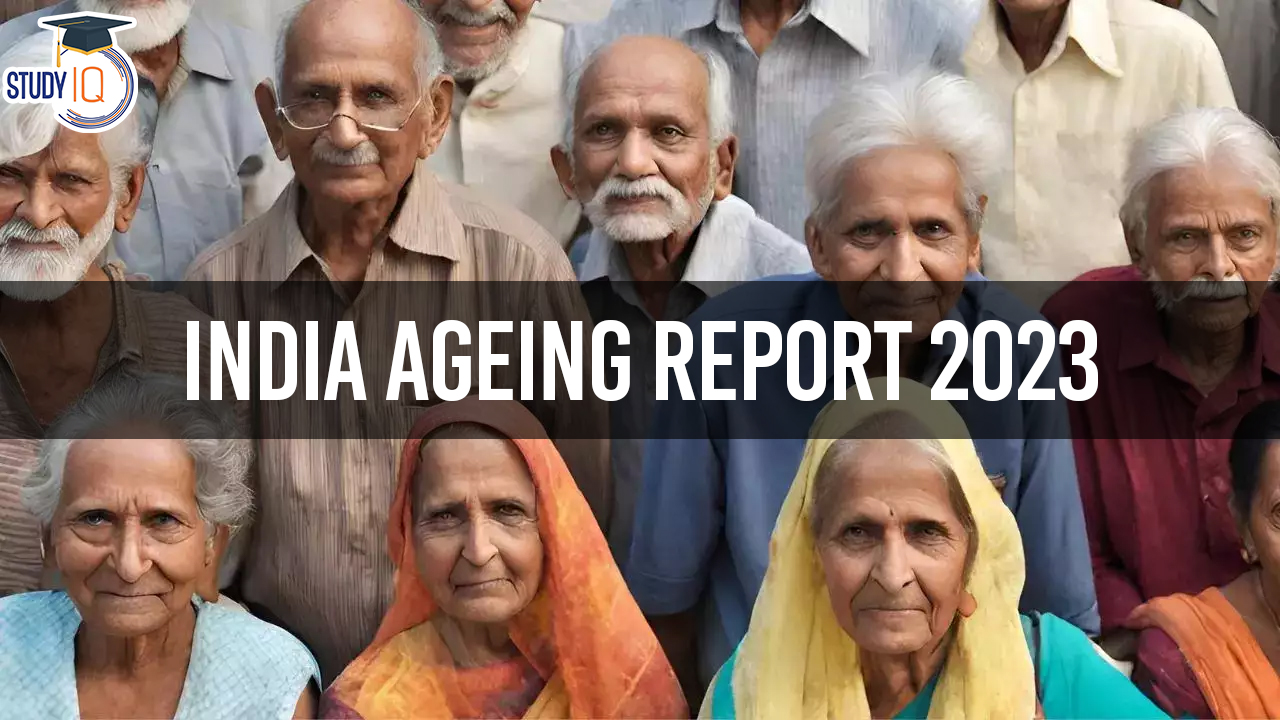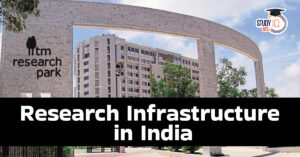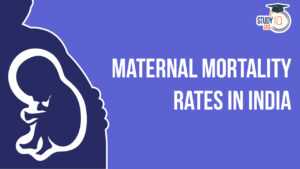Table of Contents
In a groundbreaking collaboration, the United Nations Population Fund (UNFPA) India, partnered with the International Institute for Population Sciences (IIPS), recently unveiled the much-anticipated “India Ageing Report 2023.” This comprehensive report delves into the challenges, opportunities, and institutional responses surrounding elderly care in India, offering critical insights as the nation undergoes a demographic shift towards an ageing population.
India Ageing Report 2023
On September 27, 2023, the India Ageing Report 2023 was jointly released by Mr. Saurabh Garg, Secretary, Ministry of Social Justice and Empowerment (Government of India), and Ms. Andrea M. Wojnar, UNFPA India Representative and Country Director Bhutan. The collaboration brought together government officials and international stakeholders, highlighting the significance of addressing the evolving needs of India’s elderly population.
We’re now on WhatsApp. Click to Join
India Ageing Report 2023 Methodology and Data Sources
The report draws upon a meticulous review of living conditions and welfare based on the latest data from the Longitudinal Ageing Survey in India (LASI) 2017–18, Census of India, Population Projections by the Government of India (2011–2036), and World Population Prospects 2022 by the United Nations Department of Economic and Social Affairs. This methodology ensures an up-to-date perspective on the state of elderly well-being in the country.
Key Findings of India Ageing Report 2023
- Geriatric Care Enhancement: The report emphasizes the urgent need to enhance geriatric care to address the unique healthcare needs of seniors. As the population ages, a tailored approach to healthcare becomes imperative, and the report sheds light on strategies to achieve this goal.
- Government Schemes and Policies: The India Ageing Report 2023 highlights various government schemes and policies designed to address the health, financial empowerment, and capacity building needs of the elderly population. This section explores the effectiveness and gaps in existing policies.
- Community-based Organizations and Digital Empowerment: A noteworthy aspect of the report is the active engagement of community-based organizations in digital empowerment initiatives. The inclusion of computer and internet usage sessions showcases the evolving landscape of technology-driven solutions for the elderly.
- Ministerial Committees and Policy Shaping: The involvement of ministerial committees dedicated to shaping policies for elderly welfare is a critical aspect covered in the report. Examining the roles, responsibilities, and impact of these committees provides insights into the policy-making process.
- Corporate Initiatives for Joyful Aging: Corporate efforts for joyful aging, social assistance, old age homes, and campaigns against elder abuse are explored. The report evaluates the effectiveness of these initiatives and their contributions to the overall well-being of the elderly.
| Demographic Trends | Values/Statistics |
| Decadal Growth Rate (elderly) | 41% |
| Elderly Population by 2050 | Over 20% of India’s total population |
| Elderly vs. Children (by 2046) | Elderly population surpassing children (0-15 years) |
| Population aged 80+ (2022-2050) | 279% increase |
| Higher Life Expectancy of Women | Values/Statistics |
| Life Expectancy (60 and 80) | Women have higher life expectancy than men |
| Regional Variations (Life Expectancy) | Differences in Himachal Pradesh and Kerala |
| National Average Differential | 1.5 years |
| State-wise Differential (some) | Up to 4 years greater life expectancy for women |
| Poverty and Well-being | Values/Statistics |
| Elderly in Poorest Quintile | Over 40% in the poorest wealth quintile |
| Impact on Quality of Life | Poverty affecting quality of life and healthcare |
| Income Status (some without) | Substantial proportion, especially women, without income |
| Regional Variations | Values/Statistics |
| Inter-State Variations | Significant differences in elderly population |
| States with Higher Elderly Share | Southern and select northern states |
| Widening Gap by 2036 | Gap in elderly population expected to widen |
| Sex Ratio of Elderly Population | Values/Statistics |
| Increase in Sex Ratio (since 1991) | Steady increase |
| Regional Variation (Northeast & East) | Ratio below 1,000 |
| Notable Increase (Central India) | Suggesting women outperforming men in survival |
| Awareness of Social Security Schemes | Awareness Percentage |
| Old-Age Pension Scheme (IGNOAPS) | 55% |
| Widow Pension Scheme (IGNWPS) | 44% |
| Annapurna Scheme | 12% |
Stakeholder Perspectives
Both Mr. Saurabh Garg and Ms. Andrea M. Wojnar stress the importance of the India Ageing Report 2023 as a valuable resource. Mr. Garg urges all stakeholders to collaborate in implementing the report’s recommendations, emphasizing the goal of ensuring the elderly population’s healthy, dignified, and fulfilling lives. Ms. Wojnar underscores the report’s significance for scholars, policymakers, program managers, and all stakeholders involved in elder care.
Jammu and Kashmir’s Remarkable Resilience
Jammu and Kashmir showcases impressive resistance to elderly poverty, with only 4.2 percent of its senior citizens experiencing economic hardship. In a population where the elderly constitute 9.4 percent, the region stands out for having the highest life expectancy beyond the age of 60. Notably, males exhibit a remarkable life expectancy of 20.3 percent, while females surpass with 23.0 percent, establishing Jammu and Kashmir as a leader in this demographic indicator from 2015 to 2019.
Concerns and Challenges
In the context of poverty among the elderly, gender disparities become apparent, particularly affecting older women who are more susceptible to widowhood, living in solitude, lacking personal income, possessing fewer assets, and relying entirely on family support.
The primary challenges confronting India’s ageing population revolve around the feminization and ruralization of this demographic group.
Recommendations from the Report
- Data Collection Improvement:
-
- Address the paucity of credible data on elderly-related issues by incorporating pertinent questions in national data collection exercises, such as the National Sample Survey, the National Family Health Survey, and the Census of India. This enhancement is crucial for well-informed policymaking.
- Awareness Enhancement:
-
- Increase awareness about existing schemes designed for older individuals.
- Subject all Old Age Homes to regulatory oversight to ensure adherence to standards.
- Promote the establishment and operation of elderly self-help groups, fostering a sense of community and support.
- Promotion of Multigenerational Households:
-
- Emphasize the significance of elderly individuals residing in multigenerational households.
- Advocate for policies that facilitate and support this living arrangement, recognizing its potential benefits for the well-being of older family members.
- In Situ Ageing Encouragement:
-
- Encourage ageing in situ (at home) as much as possible.
- Propose the creation of short-term care facilities like creches or day-care centers to support families in caring for their elderly members at home.
- The report suggests that elderly individuals often receive better care when living within their respective family units.
Conclusion
The India Ageing Report 2023 serves as a crucial roadmap for addressing the challenges posed by an ageing population. With its in-depth analysis and comprehensive insights, the report lays the foundation for a concerted effort by all stakeholders to ensure the well-being of India’s elderly population in the years to come.
India Ageing Report 2023 UPSC
The groundbreaking India Ageing Report 2023, a collaboration between UNFPA India and IIPS, addresses challenges and opportunities in elderly care amid India’s demographic shift. Released on September 27, 2023, by Mr. Saurabh Garg and Ms. Andrea M. Wojnar, the report draws on LASI, Census data, and global projections. Key findings highlight the need for enhanced geriatric care, effectiveness of government policies, digital empowerment by community organizations, the role of ministerial committees, and corporate initiatives for joyful aging. Stakeholders, including Mr. Garg and Ms. Wojnar, emphasize the report’s significance, urging collaborative implementation for the healthy, dignified, and fulfilling lives of India’s elderly population.


 Research Infrastructure in India for its...
Research Infrastructure in India for its...
 Maternal Mortality Rate in India, State ...
Maternal Mortality Rate in India, State ...
 Reservation in Private Universities, Nee...
Reservation in Private Universities, Nee...





















